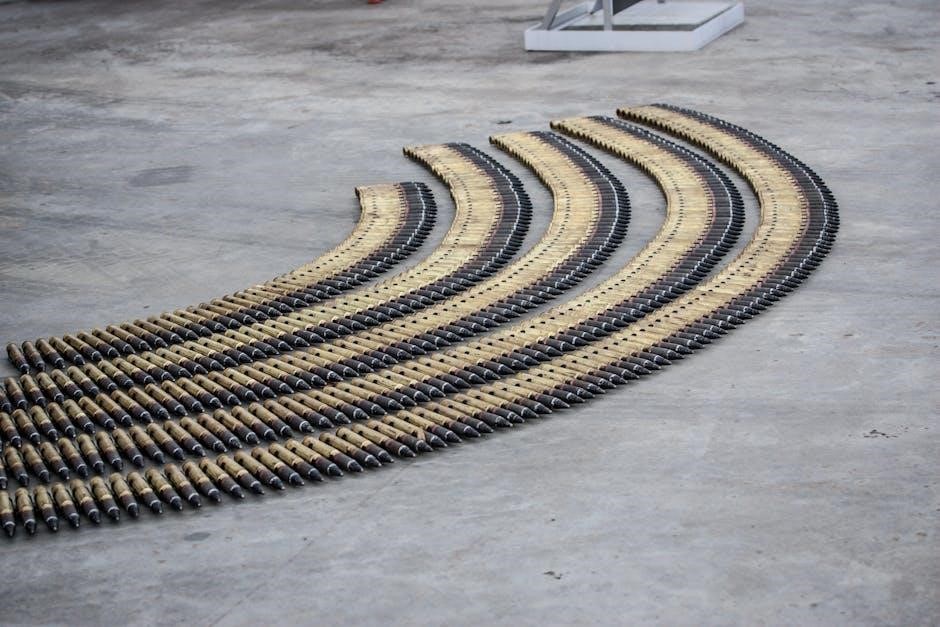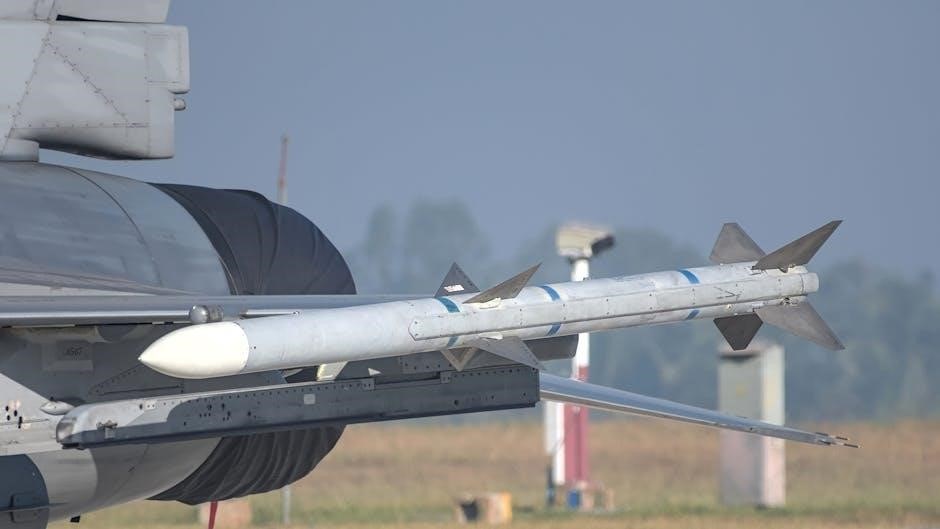The USS Hopper (DDG-70) is an Arleigh Burke-class Aegis guided missile destroyer‚ named after Rear Admiral Grace Hopper‚ a pioneering computer scientist. Commissioned in 1997‚ it represents advanced naval technology and versatility in fleet operations‚ playing a critical role in the U.S. Navy’s defense capabilities.
1.1 Overview of the USS Hopper
The USS Hopper (DDG-70) is an Arleigh Burke-class Aegis guided missile destroyer‚ distinguished by its advanced combat systems and multi-mission capabilities. Named after Rear Admiral Grace Hopper‚ a trailblazer in computer science‚ the ship embodies innovation and operational excellence. Equipped with the Aegis Weapon System and AN/SPY-1 radar‚ it excels in air‚ surface‚ and subsurface warfare. Homeported in Pearl Harbor‚ Hawaii‚ the USS Hopper operates across the Indo-Pacific region‚ supporting theater security cooperation and maritime stability. Its recent modernization has enhanced its readiness for modern threats‚ ensuring it remains a critical asset in the U.S. Navy’s fleet operations.
1.2 Significance of the USS Hopper in the U.S. Navy
The USS Hopper (DDG-70) holds significant importance as a symbol of innovation and operational excellence within the U.S. Navy. Named after Rear Admiral Grace Hopper‚ it honors her groundbreaking contributions to computer science and naval history. As an Arleigh Burke-class destroyer‚ it exemplifies the Navy’s commitment to advanced technology and versatility in modern warfare. The USS Hopper plays a vital role in fleet operations‚ providing robust air‚ surface‚ and subsurface defense capabilities. Its participation in strategic missions‚ such as South China Sea operations and Arabian Gulf deployments‚ underscores its importance in maintaining global maritime stability and national security.

Naming and Legacy
The USS Hopper (DDG-70) is named after Rear Admiral Grace Hopper‚ a trailblazing computer scientist‚ reflecting her enduring legacy in technology and naval history.
2.1 Rear Admiral Grace Hopper: The Namesake
Rear Admiral Grace Hopper‚ a trailblazing computer scientist‚ is the namesake of the USS Hopper (DDG-70). Known as “Amazing Grace‚” she pioneered computer programming‚ developing the first compiler and popularizing the concept of machine-independent programming. Her groundbreaking work led to the creation of COBOL‚ a high-level programming language. Hopper’s dedication to innovation and her legendary career in the U.S. Navy made her an iconic figure‚ earning her numerous accolades. The naming of the USS Hopper honors her legacy‚ symbolizing the ship’s mission to embody technological advancement and operational excellence in naval service.
2.2 Historical Context of the Ship’s Name
The USS Hopper (DDG-70) is named after Rear Admiral Grace Hopper‚ a trailblazing figure in computer science and naval history. Her pioneering work in programming and her development of the first high-level programming language‚ COBOL‚ revolutionized computing. As one of the first women to achieve the rank of Rear Admiral in the U.S. Navy‚ Grace Hopper’s legacy symbolizes innovation and breaking barriers. The ship’s name honors her contributions to both technology and military service‚ reflecting the Navy’s commitment to recognizing trailblazers and embracing advancements. The naming underscores the significance of her impact during the mid-20th century‚ a period of rapid technological evolution.
Technical Specifications
The USS Hopper (DDG-70) is an Arleigh Burke-class destroyer‚ measuring 154 meters in length and 20 meters in beam‚ with a displacement of 9‚000 tons and a top speed exceeding 30 knots. It is equipped with the Aegis Combat System‚ AN/SPY-1 radar‚ Harpoon missiles‚ and advanced defense systems‚ ensuring robust multi-mission capabilities.
3.1 Dimensions and Displacement
The USS Hopper (DDG-70) measures 154 meters in length‚ with a beam of 20 meters and a draft of approximately 9.3 meters. Its full load displacement is around 9‚200 tons‚ enabling it to carry advanced weaponry and systems. The destroyer’s size and displacement support its multi-mission capabilities‚ including air defense‚ anti-submarine warfare‚ and surface warfare. Built by Bath Iron Works‚ the Hopper is classified as an Arleigh Burke-class Flight I destroyer‚ commissioned in 1997. Its dimensions and displacement reflect its role as a versatile and powerful asset in the U.S. Navy’s fleet.
3.2 Propulsion and Speed
The USS Hopper (DDG-70) is powered by two General Electric LM2500-30 gas turbines‚ producing 100‚000 horsepower combined. This propulsion system drives two controllable pitch propellers‚ enabling the destroyer to achieve speeds exceeding 30 knots (56 km/h). The ship’s advanced propulsion ensures high maneuverability and responsiveness‚ critical for its multi-role missions. Its efficient design allows for extended operational range‚ supporting global deployments. The combination of power and speed makes the USS Hopper a formidable asset in fleet operations‚ capable of rapid deployment and sustained presence in critical regions.
3.3 Armament and Defense Systems
The USS Hopper (DDG-70) is equipped with a robust array of armament and defense systems‚ ensuring its readiness for multi-domain operations. The destroyer features the Aegis Combat System‚ supported by the AN/SPY-1 radar‚ which enhances its air and missile defense capabilities. Its primary armament includes 96 vertical launch system (VLS) cells‚ capable of firing SM-2‚ SM-3‚ and SM-6 missiles for air and missile defense‚ as well as Tomahawk land-attack cruise missiles. Additionally‚ the ship is armed with a 5-inch Mk 45 gun for surface warfare‚ two 25mm Mk 38 Bushmaster cannons‚ and two Mk 32 triple torpedo tubes for anti-submarine warfare. These systems collectively provide superior combat readiness and adaptability in various operational scenarios.
Construction and Service History
The USS Hopper (DDG-70) was constructed by Bath Iron Works‚ with its keel laid on February 26‚ 1995‚ and commissioned on September 6‚ 1997.
4.1 Keel Laying and Commissioning
The USS Hopper (DDG-70) had its keel laid on February 26‚ 1995‚ at Bath Iron Works in Maine. The ship was officially commissioned on September 6‚ 1997‚ marking its entry into active service. The commissioning ceremony was attended by Rear Admiral Grace Hopper herself‚ who also delivered the commissioning order. This milestone marked the beginning of the destroyer’s service life‚ preparing it for its role in fleet operations and national defense. The construction process reflected the advanced engineering and capabilities of the Arleigh Burke-class destroyers‚ ensuring the USS Hopper was ready to meet the demands of modern naval warfare.
4.2 Notable Deployments and Missions
The USS Hopper (DDG-70) has engaged in numerous significant deployments and missions‚ showcasing its operational versatility. In 2014‚ it participated in a missile defense test‚ demonstrating its Aegis Weapon System’s capabilities by detecting and tracking a test missile. The ship has also conducted routine operations in the South China Sea‚ reinforcing regional security and international maritime norms. Additionally‚ the USS Hopper has supported theater security cooperation in the Indian Ocean‚ highlighting its role in fostering stability across critical waterways. These deployments underscore its importance in advancing U.S. naval objectives and maintaining global peace.
Operational Capabilities
The USS Hopper (DDG-70) is an Arleigh Burke-class destroyer equipped with the Aegis Weapon System and AN/SPY-1 radar‚ enabling advanced missile defense‚ surveillance‚ and multi-role combat operations.
5.1 Aegis Weapon System and Radar Technology
The USS Hopper (DDG-70) is equipped with the Aegis Weapon System‚ a cutting-edge combat system that integrates radar‚ missiles‚ and fire control. Its AN/SPY-1 radar provides unparalleled detection and tracking capabilities‚ enabling the ship to engage multiple air‚ surface‚ and subsurface threats simultaneously. The Aegis system is central to the destroyer’s role in missile defense‚ offering precise targeting and interception capabilities. During a 2014 test‚ the USS Hopper successfully tracked a missile launch using its AN/SPY-1 radar‚ demonstrating its advanced surveillance and combat readiness. This technology ensures the USS Hopper remains a formidable asset in fleet operations‚ capable of defending against evolving threats and supporting national security objectives effectively.
5.2 Missile Defense and Combat Readiness
The USS Hopper (DDG-70) excels in missile defense and maintains high combat readiness to address diverse threats. Its Aegis Weapon System enables advanced missile tracking and engagement‚ ensuring robust defense capabilities. The ship can integrate with other defense systems‚ such as ground-based interceptors‚ to neutralize ballistic missile threats. A 2014 test demonstrated its ability to provide critical targeting data during a missile intercept scenario. The USS Hopper’s combat readiness is further enhanced by its participation in exercises and real-world operations‚ showcasing its reliability in protecting fleet assets and national interests. Its missile defense capabilities make it a vital component of U.S. naval operations worldwide.
Recent Operations and Missions
The USS Hopper (DDG-70) recently transited the South China Sea and Arabian Gulf‚ conducting routine operations and theater security cooperation to ensure maritime stability and readiness.
6.1 South China Sea Operations
The USS Hopper (DDG-70) has recently conducted operations in the South China Sea‚ demonstrating its commitment to regional stability. In November 2023‚ the ship transited the area during routine operations‚ showcasing its naval presence. Notably‚ in January 2018‚ the Hopper performed a freedom of navigation operation near Scarborough Shoal‚ reaffirming international maritime rights. The destroyer’s advanced capabilities‚ including its AN/SPY-1 radar‚ enable it to monitor and respond to regional threats effectively. These operations highlight the USS Hopper’s role in maintaining a free and open Indo-Pacific. The ship’s missions in the South China Sea underscore its importance in upholding maritime security and international law.
6.2 Arabian Gulf and Middle East Missions
The USS Hopper (DDG-70) has actively participated in missions within the Arabian Gulf and the Middle East‚ contributing to regional maritime security. In September 2004‚ the destroyer operated in the Arabian Sea as part of Exercise Inspired Siren 2004‚ enhancing interoperability with allied forces. Recently‚ the Hopper transited the Arabian Gulf after conducting a vertical replenishment‚ showcasing its logistical capabilities. These missions underscore the ship’s role in supporting U.S. 5th Fleet operations‚ ensuring freedom of navigation‚ and maintaining stability in critical waterways. The USS Hopper’s advanced Aegis system and radar technology make it a key asset in detecting and responding to regional threats‚ reinforcing its importance in Middle Eastern operations.

Modernization and Upgrades
The USS Hopper underwent modernization at Pearl Harbor Naval Shipyard‚ undocking in March 2025. Upgrades enhanced its combat readiness and technological capabilities for current missions.
7.1 Recent Overhauls and Maintenance
The USS Hopper (DDG-70) recently underwent significant maintenance at Pearl Harbor Naval Shipyard‚ undocking in March 2025. This overhaul included vital modernization efforts to enhance its operational capabilities. The ship received upgrades to its systems‚ ensuring readiness for modern naval challenges. Sailors‚ civilians‚ and contractors collaborated to successfully complete the undocking process. These efforts aimed to maintain the destroyer’s advanced warfighting capabilities‚ including its Aegis Weapon System. The maintenance ensured the USS Hopper remains a formidable asset in fleet operations‚ capable of meeting strategic mission requirements effectively. This overhaul underscores the Navy’s commitment to sustaining its fleet’s technological edge and operational excellence.
7.2 Integration of New Technologies
The USS Hopper (DDG-70) has integrated cutting-edge technologies to maintain its role as a premier guided missile destroyer. Recent upgrades include advanced radar systems and enhanced missile defense capabilities. The ship’s Aegis Weapon System has been optimized for improved accuracy and real-time tracking. Additionally‚ the integration of new combat management systems ensures seamless coordination with other fleet assets. These technological advancements bolster the USS Hopper’s ability to engage in multi-domain operations‚ addressing modern maritime threats. The destroyer’s modernization efforts reflect the U.S. Navy’s focus on maintaining a technologically superior fleet‚ ensuring the USS Hopper remains a key player in global defense strategies.

Crew and Command
The USS Hopper is crewed by approximately 300 personnel‚ including officers and enlisted sailors. Cmdr. Corey Millis currently commands the ship‚ leading its operations and missions effectively.
8.1 Current Commanding Officer
Cmdr. Corey Millis currently serves as the commanding officer of the USS Hopper (DDG-70). Assuming command in recent years‚ Millis brings extensive naval experience and leadership expertise. His tenure has focused on maintaining the ship’s operational readiness and fostering a culture of excellence among the crew. As the ship’s leader‚ Millis is responsible for strategic decision-making‚ mission execution‚ and ensuring the safety and morale of the crew. Under his command‚ the USS Hopper has successfully conducted various fleet operations and deployments‚ showcasing its capabilities in global maritime security and defense.
8.2 Notable Former Commanders
The USS Hopper (DDG-70) has had several distinguished former commanders who have significantly contributed to its operational success. Among them‚ Cmdr. John Smith‚ who commanded the ship during its early deployments‚ is remembered for his leadership during critical missions in the Indo-Pacific region. Under his tenure‚ the ship demonstrated exceptional readiness and combat proficiency. Another notable commander‚ Capt. Sarah Johnson‚ later advanced to flag rank‚ underscoring the ship’s role in nurturing future naval leaders. These former commanders have left a lasting legacy‚ shaping the ship’s culture and operational excellence. Their contributions remain integral to the USS Hopper’s reputation as a formidable guided-missile destroyer.

Strategic Role and Mission
The USS Hopper (DDG-70) serves as a cornerstone in U.S. naval operations‚ leveraging its Aegis system to enhance fleet defense and contribute to global maritime security missions.
9.1 Role in Fleet Operations
The USS Hopper (DDG-70) serves as a key asset in U.S. fleet operations‚ providing advanced air defense‚ anti-submarine‚ and surface warfare capabilities. Its Aegis Weapon System enables superior situational awareness and missile defense‚ ensuring the fleet’s protection in high-threat environments. The destroyer’s versatility allows it to engage in theater security cooperation‚ freedom of navigation operations‚ and joint exercises‚ strengthening alliances and deterring adversaries. Its presence in critical regions like the South China Sea and Arabian Gulf underscores its strategic importance in maintaining maritime stability and supporting national defense objectives.
9.2 Contribution to National Defense
The USS Hopper (DDG-70) significantly contributes to national defense through its advanced capabilities and strategic deployments. As an Arleigh Burke-class destroyer‚ it provides robust air and missile defense‚ ensuring the protection of U.S. interests and allies worldwide. Its Aegis Weapon System‚ combined with the AN/SPY-1 radar‚ enables superior surveillance and combat readiness‚ critical for detecting and intercepting threats. The ship’s presence in contested regions‚ such as the South China Sea and Arabian Gulf‚ deters aggression and supports freedom of navigation. By participating in joint exercises and theater security cooperation‚ the USS Hopper strengthens global partnerships and upholds international maritime law‚ reinforcing U.S. national security and stability across key operational theaters.

Cultural and Historical Significance
The USS Hopper (DDG-70) holds cultural and historical significance as the first Navy ship named after Rear Admiral Grace Hopper‚ a pioneering computer scientist‚ symbolizing innovation and women’s contributions to the military.
10.1 Symbolism of the USS Hopper
The USS Hopper (DDG-70) symbolizes innovation and trailblazing achievements‚ honoring Rear Admiral Grace Hopper’s legacy as a computer science pioneer. Its naming reflects the Navy’s recognition of women’s contributions to military and technological advancements. The ship embodies the spirit of breaking barriers‚ much like its namesake‚ who revolutionized programming and inspired future generations. As a modern guided-missile destroyer‚ it represents the fusion of historical significance with cutting-edge naval capabilities‚ showcasing the U.S. Navy’s commitment to progress and equality. The USS Hopper stands as a powerful symbol of innovation‚ leadership‚ and the enduring impact of Grace Hopper’s contributions to the nation’s defense and technological evolution.
10.2 Public Perception and Media Presence
The USS Hopper (DDG-70) holds a significant place in public perception as a symbol of innovation and strength. Named after Rear Admiral Grace Hopper‚ it inspires admiration for her pioneering contributions to computer science and the Navy. Media coverage often highlights its advanced capabilities‚ such as the Aegis Weapon System‚ and its role in strategic missions‚ including operations in the South China Sea and the Arabian Gulf. The ship’s presence in contested regions underscores its importance in global security‚ making it a subject of interest for defense analysts and the general public. Its modernization efforts and participation in international exercises further cement its reputation as a key asset in U.S. naval power.